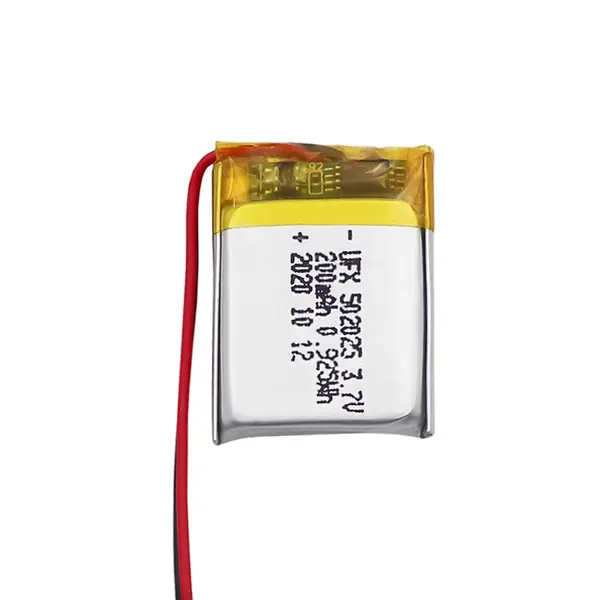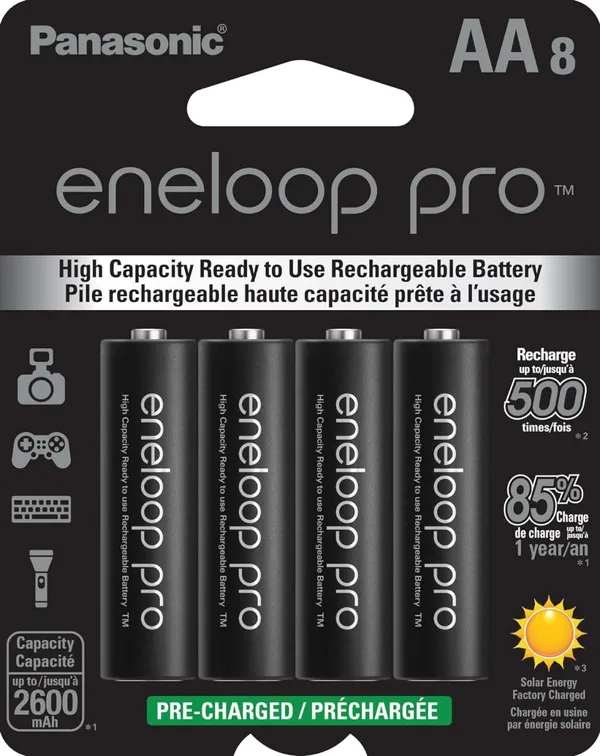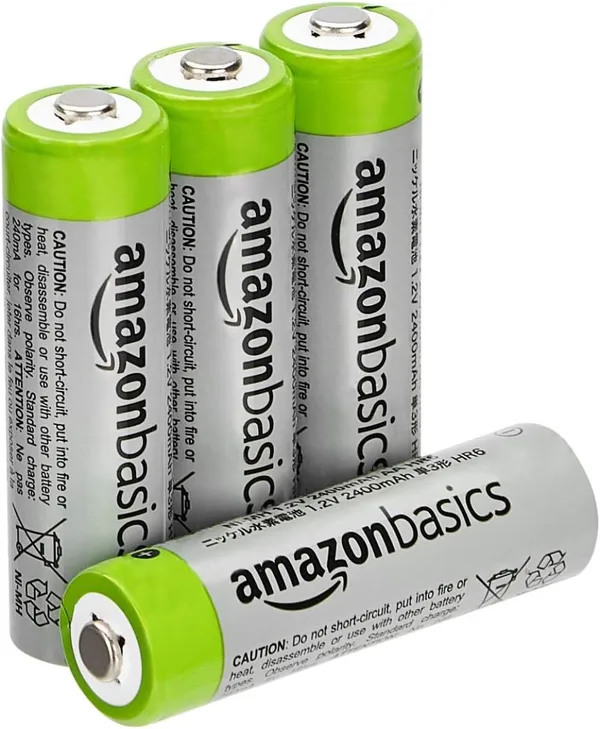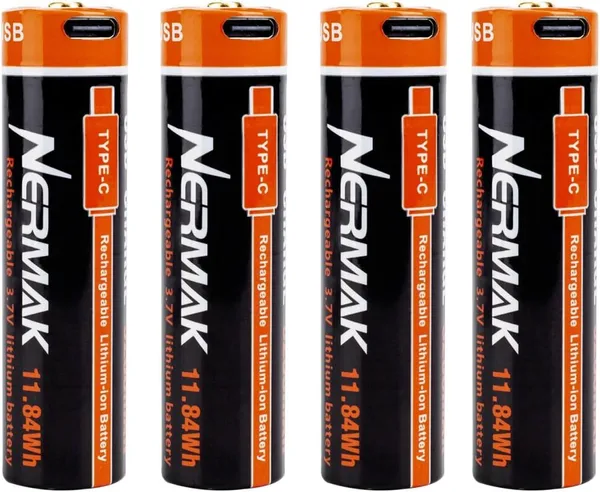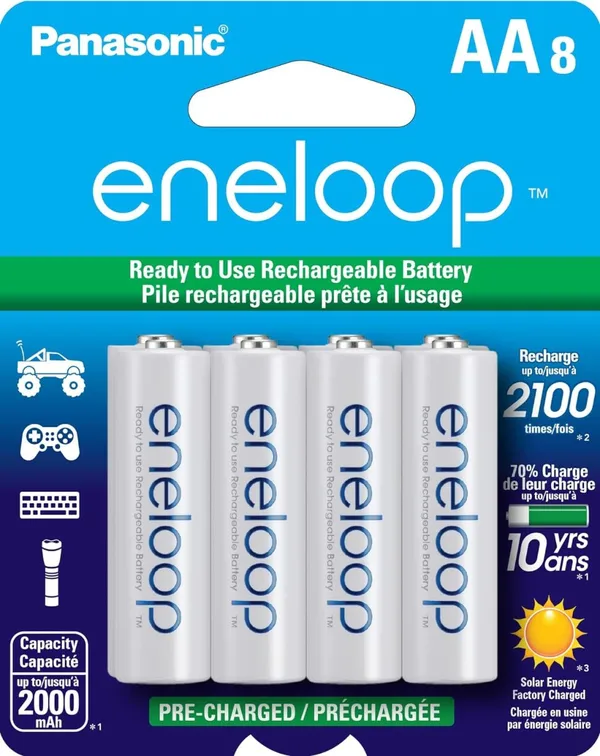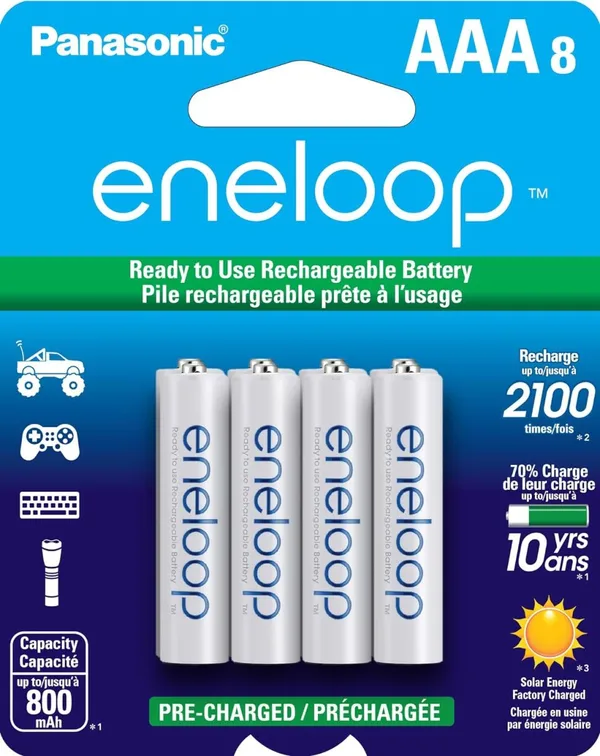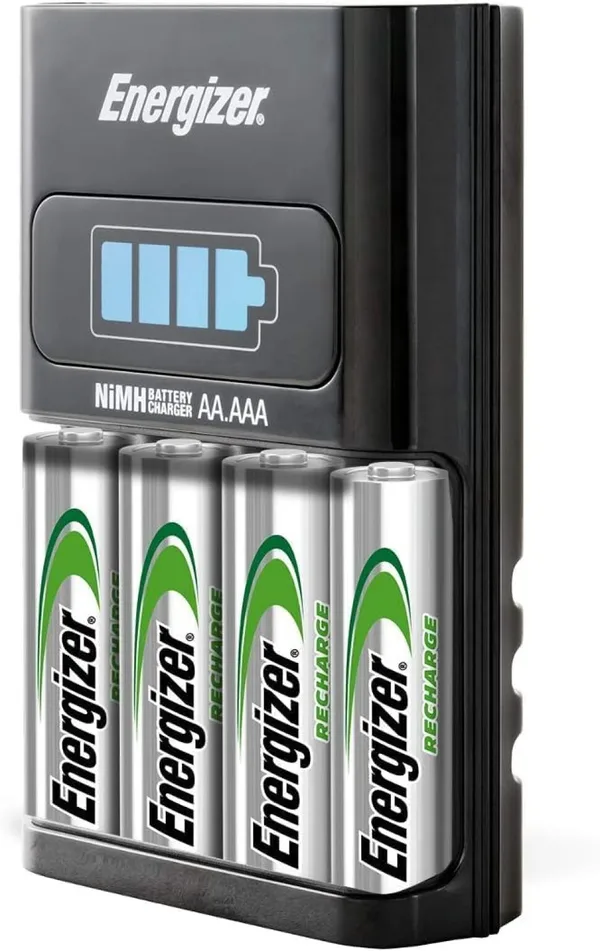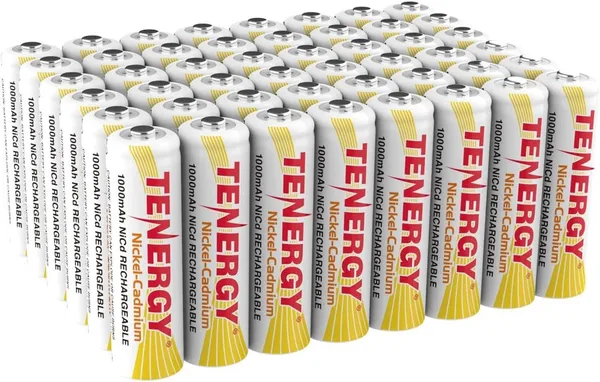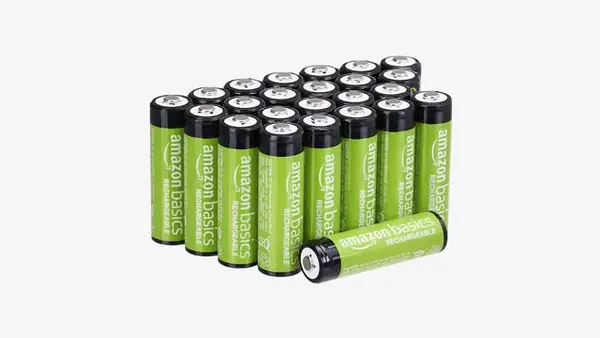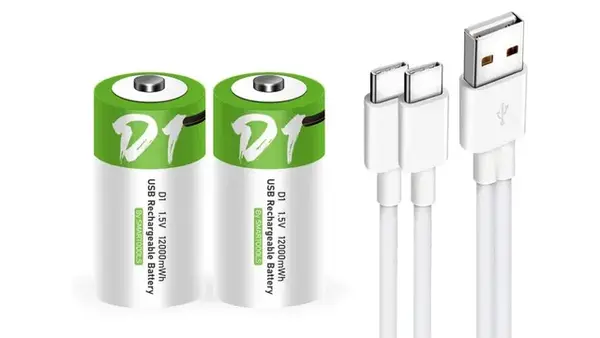As technology becomes more sophisticated, there is heightened demand and a critical need for rechargeable batteries. In contrast, previously viewed as the primary energy source for all equipment, disposable batteries are now deemed expensive and ineffective.
Each has advantages, designed to work with specific purposes and on particular devices. The fact remains that there are many options and opportunities, and the trick is to pinpoint which one will be most suitable for the given task.
In this guide, you will explore the best rechargeable batteries of 2024 and the key takeaways to choose the ideal battery for you.
Part 1. Types of rechargeable batteries
The following are the key types of Rechargeable batteries you can find in the market:
- Lithium-ion (Li-Ion) batteries: As Lithium-ion (Li-Ion) batteries the advantages of Li-Ion batteries include the fact that they have relatively high energy density and also another important characteristic – they can store a considerable amount of energy for their size.
- Nickel-Metal Hydride (NiMH): Nickel-metal hydride batteries have a higher capacity than nickel-cadmium batteries and are less prone to the memory effect.
- Nickel-cadmium (NiCd) batteries are durable, perform well in low temperatures, and handle many charge/discharge cycles.
- Lead-Acid: Lead-acid batteries are heavy and have a lower energy density but are reliable and inexpensive.
- Lithium Iron Phosphate (LiFePO4): Lithium iron phosphate batteries are known for their safety, long cycle life, and overheating. They are also used in applications requiring high load currents and durability.
Part 2. Top 10 rechargeable batteries review 2024
1. Ufine 3.7 V 200mAh Lithium Ion Battery 502025
Specifications
- Model: 502025
- Capacity: 200mAh
- Nominal voltage: 3.7V
- Energy: 0.74Wh
- Internal resistance: <240mΩ
- Charging temperature: 0℃ to 45℃
- Cycle life: 100 cycles ≥92%, 300 cycles ≥88%, 500 cycles ≥80%
- Weight: Approximately 5.6g
- Configuration: 1S1P (1 cell, one parallel)
Features
- Ability to work at temperatures as low as -40℃.
- A stable 3.7V output ensures consistent power for various electronics.
- Extended cycle life.
- Built-in protections against overcharging.
- Customizable capacities and sizes to fit diverse device needs.
- Certifications: KC, UN38.3
Performance
This battery is designed for reliable performance in extreme temperatures, providing consistent power output.
2. Panasonic Eneloop Pro AA/AAA
Specifications
- Battery type: Nickel Metal Hydride (NiMH)
- Capacity: 2,500 mAh (AA), 950 mAh (AAA)
- Recharge cycles: 500
Features
- A high capacity of 2,500 mAh (AA) provides extended use.
- Pre-charged using solar energy.
- It maintains up to 85% charge capacity over long periods.
- Performs well in low temperatures.
Performance
The Eneloop Pro batteries excel in charge retention and cold-weather performance. With a substantial capacity and support for 500 Recharge cycles, they are ideal for high-drain devices.
3. Amazon Basics High-Capacity
Specifications
- Battery type: Nickel Metal Hydride (NiMH)
- Capacity: 2,400 mAh (AA), 800 mAh (AAA)
- Recharge cycles: Up to 400
Features
- Affordable pricing with significant savings.
- High capacity ensures more extended device operation
- Low self-discharge rate and long shelf life.
Performance
These batteries offer excellent value, balancing capacity, and affordability. They support up to 400 Recharge cycles and maintain 50% of their charge after a year of storage.
4. Nermak 3.7V 3,200 mAh Lithium Ion
Specifications
- Battery type: Lithium Ion
- Capacity: 3,200 mAh
- Recharge cycles: 1,500+
Features
- Massive 3,200 mAh capacity for extended use in demanding devices.
- USB-C recharge port allows for charging other devices like smartphones.
- It supports USB-C to USB-C charging, making it versatile for various gadgets.
Performance
Nermak batteries serve dual purposes as high-capacity AA batteries and mini power banks. They are perfect for high-demand devices with over 1,500 Recharge cycles and a massive capacity.
5. Panasonic Eneloop AA
Specifications
- Battery type: Nickel Metal Hydride (NiMH)
- Capacity: 2,000 mAh
- Recharge cycles: 2,100
Features
- Balanced capacity and recharge cycle support.
- It maintains up to 70% of charge even after ten years of storage.
- It performs well in cold weather down to -4°F.
Performance
The standard Eneloop AA batteries offer an excellent balance of capacity and longevity. They support over 2,000 Recharge cycles and impressive charge retention, making them ideal for long-term use in various devices.
6. Panasonic Eneloop AAA
Specifications
- Battery type: Nickel Metal Hydride (NiMH)
- Capacity: 800 mAh
- Recharge cycles: 2,100
Features
- High capacity and extensive recharge cycle support.
- Maintains effective charge over ten years of non-use.
- Performs well in low temperatures.
Performance
These AAA batteries provide outstanding performance with over 2,000 Recharge cycles and minimal self-discharge. They are perfect for users needing reliable, long-lasting power for small devices, even in cold environments.
7. Energizer 1-Hour Charger
Specifications
- Battery type: Nickel Metal Hydride (NiMH)
- Capacity: 2,000 mAh (AA)
- Recharge cycles: 1,000
Features
- Fast charging in an hour or less.
- Individual charging channels with overcharge and overvolt protection.
- Comes with AA and AAA batteries.
Performance
The Energizer 1-Hour Charger is perfect for those who need a quick recharge solution. The included batteries have a solid capacity and can support up to 1,000 Recharge cycles.
8. Tenergy Rechargeable NiCd 48-pack
Specifications
- Battery type: Nickel-Cadmium (NiCd)
- Capacity: 1,000 mAh
- Recharge cycles: 500
Features
- Outstanding value per battery.
- Pre-charged and compatible with all consumer AA devices.
- Operates well in both low and high temperatures.
Performance
This bulk pack offers exceptional value, especially for garden lighting and outdoor equipment applications. While the capacity is lower and the recharge cycle count is limited.
9. Amazon Basics 24-Pack Rechargeable AA Ni-MH Batteries
Specifications
- Capacity: 2,000mAh
- Recharge cycles: Up to 1,000
- Shelf Life: Maintains 80% capacity for two years
Features
- Affordable bulk pack
- Pre-charged and ready-to-use
- Consistent discharge performance
Performance
Amazon Basics rechargeable AA batteries offer fantastic value, especially for stockpiling batteries. They maintain 80% of their charge for up to 2 years, providing reliable performance for various devices.
10. Lankoo Lithium Ion D Rechargeable Batteries
Specifications
- Capacity: 12,000mWh
- Recharge cycles: 1,200+
- Charging Time: 4 hours
Features
- Built-in USB-C port for easy recharging
- Constant 1.5V output
- Integrated safety circuit for over-discharge and overcharge protection
Performance
Lankoo Lithium Ion D rechargeable batteries are a convenient solution for devices requiring D-cell batteries. The built-in USB-C port allows straightforward recharging from any USB source, making them very user-friendly.
Part 3. How do you choose the best rechargeable battery?
Here’s how to choose the best rechargeable battery for your needs:
- Understand the basic requirements of your device and its functionality.
- Charging for lithium-ion batteries is also different according to the battery chemistry.
- The amount of charge stored in batteries, or the capacity of a battery, is expressed in milliampere-hours (mAh) and determines how long a battery can be used once it is charged.
- Cycle life is the number of times a battery can be recharged before it starts losing its capacity.
- Some batteries lose their charge over time, even when not in use. Look for low self-discharge batteries if you need them to be ready.
Part 4. FAQs
-
Why should I switch to rechargeable batteries?
Understand that if you continue to do so, you and the environment will lose money and contribute to e-waste. The initial cost is higher, but the benefits come in multiple folds since you must use them several times before they need replacement. -
What is the best rechargeable battery?
The best rechargeable battery is 3.7 V 200mAh Lithium Ion Battery 502025 because it has a capacity of 200mAh, nominal voltage of 3.7 V, and energy of 0.74 Wh. -
What are the main types of rechargeable batteries?
The main types of rechargeable batteries are Lithium-ion (Li-Ion), Nickel-metal hydride, Nickel-cadmium, Lead-Acid, and Lithium Iron Phosphate. -
Which is better, Li-ion or NiMH?
The best option is lithium-ion batteries because they have a high energy density, an ideal voltage capacity, and a longer life.
Related Tags:
More Articles

How to Choose the Best Floor Scrubber Battery for Commercial Cleaning?
Selecting the ideal floor scrubber battery ensures a long runtime, rapid charging, and minimal maintenance for efficient commercial cleaning operations.
Battery for Blower vs Battery for Leaf Vacuum: Which One Should You Choose?
Battery for blower vs leaf vacuum—learn the key differences in power, fit, and runtime to choose the right battery for your outdoor tool needs.
How to Choose the Right Battery for Blower?
Choosing the right blower battery? Consider voltage, capacity, chemistry & usage. This guide helps match the best battery for peak performance.
How to Choose the Best Insulated Battery Box for Lithium Batteries?
Choosing the Best Insulated Battery Box for Lithium Batteries? Discover key factors such as size, material, and safety for optimal protection and performance.
7 Critical Elements on a Lithium Battery Shipping Label
What must be on a lithium battery shipping label? Learn 7 key elements to ensure safety, legal compliance, and correct handling across all transport modes.
